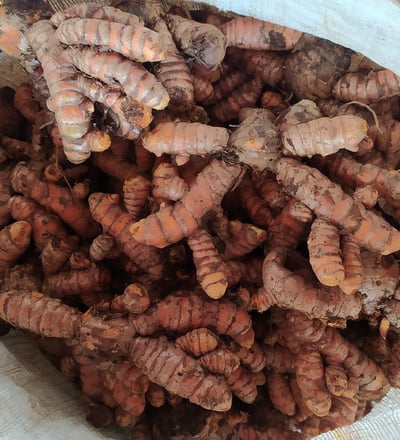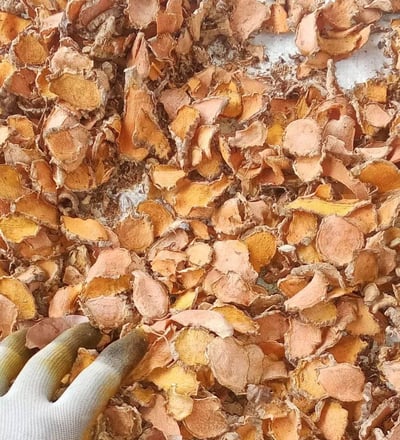Turmeric
Benefits
Turmeric is a vibrant yellow-orange spice widely recognized for its powerful medicinal properties and is often referred to as "the golden spice." The key active compound in turmeric, curcumin, has potent anti-inflammatory and antioxidant effects, which have been extensively studied for their health benefits. Turmeric is commonly used to reduce inflammation, relieve pain, and improve symptoms of arthritis. It is also known to enhance brain function, lower the risk of heart disease, and may help prevent certain cancers. Additionally, turmeric supports the immune system, aids in digestion, and promotes healthy skin. It is often consumed in the form of turmeric tea, supplements, or as a spice in cooking, particularly in curries and traditional dishes.
History in Indonesia
Turmeric has a deep-rooted history in Indonesia, where it has been cultivated and used for centuries in both culinary and medicinal practices. It is a staple in Indonesian cuisine, often used in traditional dishes like "nasi kuning" (yellow rice) and "rendang" (spiced meat). Turmeric is also an essential ingredient in "jamu," a traditional Indonesian herbal medicine. The use of turmeric in Indonesia dates back to ancient times, with its origins likely linked to the spread of Ayurveda and trade routes from India. During the spice trade era, turmeric was one of the many valuable spices exported from Indonesia to other parts of Asia, the Middle East, and Europe. Today, Indonesia continues to be one of the major producers of turmeric, with the spice playing a significant role in the country's agricultural economy.
Cultivation and Growth
Turmeric thrives in tropical and subtropical climates, making Indonesia's warm and humid environment ideal for its cultivation. It is predominantly grown in regions such as Java, Bali, and Sumatra. Turmeric plants require well-drained, fertile soil rich in organic matter and a significant amount of rainfall. The plants are typically grown from rhizomes (underground stems), which are planted in raised beds to avoid waterlogging. Turmeric grows best in partial shade and prefers temperatures between 20°C to 30°C (68°F to 86°F). The plants reach maturity within 7 to 10 months, at which point the rhizomes are harvested.
Harvesting Season
Turmeric is usually harvested once the leaves of the plant start to turn yellow and dry up, indicating that the rhizomes have matured. In Indonesia, the harvesting season typically occurs from June to December, depending on the region and climate conditions. After harvesting, the rhizomes are cleaned, boiled or steamed to remove any raw odor, and then sun-dried or machine-dried until they reach a hard, dry state. Once dried, the turmeric can be stored as whole rhizomes or ground into turmeric powder.
Shelf Life
Turmeric has a relatively long shelf life when stored properly. Whole dried turmeric rhizomes can last up to 2 to 3 years if kept in a cool, dry place away from direct sunlight. Ground turmeric powder has a shorter shelf life, typically lasting around 6 months to a year before it begins to lose its flavor, color, and potency. To maintain its quality, turmeric should be stored in an airtight container, protected from moisture and light.
Global Market Impact
Turmeric is a highly valued spice in the global market, both for its culinary uses and its health benefits. Indonesia is one of the key producers and exporters of turmeric, supplying significant quantities to international markets, including Asia, Europe, and North America. The demand for turmeric has surged in recent years due to growing awareness of its health benefits and its use in natural health products, dietary supplements, and cosmetics. Turmeric is widely used in the food industry, particularly in spice blends, curries, and as a natural food coloring. The global market for turmeric is influenced by factors such as climate conditions, production yields, and trade policies, which can affect supply and pricing. Despite these challenges, turmeric remains a crucial commodity in the global spice trade, appreciated for its vibrant color, distinctive flavor, and numerous health-promoting properties.








